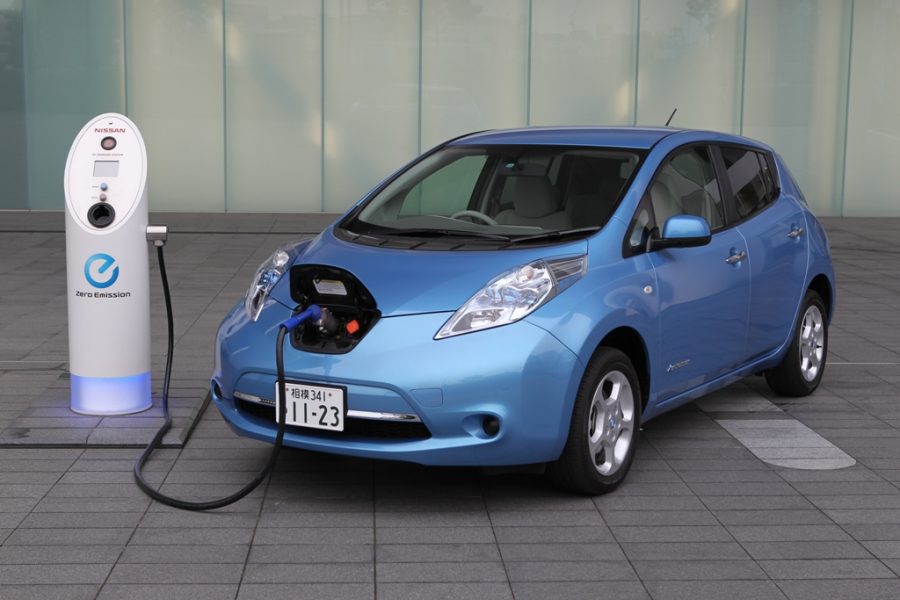
What you need to know about the electrical system of the car?
Content
- Electrical system. Principle of work
- The device of the electrical system of the car
- Basic concepts of the electrical system
- Polarity in the electrical system
- Short circuit and fuses
- Checking the electrical system
- Resistance in the electrical system
- Connection in the electrical system
- Additional facts about the electrical system
- Questions and answers:
Electrical system. Principle of work
How the electrical system of a car works. The vehicle's electrical system has a closed battery-powered circuit. It operates on a small fraction of the power of a household circuit. In addition to the main circuits for charging, starting and ignition, there are other circuits that power headlights, electric motors, sensors and dimensions of electrical appliances, heating elements, magnetic locks, radios, etc. All circuits are opened and closed either by switches or relays - remote switches controlled by electromagnets. Current flows through the cable from the battery to the power component and back to the battery through the car's metal body. The housing is connected to the battery ground terminal with a thick cable. In a negative (-) grounding system, current flows from the positive (+) terminal to the component being used. The component is grounded at the vehicle body, which is grounded at the negative (-) battery terminal.
The device of the electrical system of the car
This type of circuit is called a grounding system, each part connected to the car body is called grounded. Current is measured in amperes (amperes); The pressure that moves around the circuit is called voltage (volts). Modern cars have a 12-volt battery. Its capacity is measured in amperes / hour. A 56 A / h battery should provide 1 A for 56 hours or 2 A for 28 hours. If the battery voltage drops, less current flows and, in the end, there are not enough components to operate. Current, voltage and resistance. The degree of resistance of a wire to current is called resistance and is measured in ohms. Thin wires are easier to hold than thick ones because electrons have less space to pass through.
Most of the energy needed to get current through resistance is converted to heat.
Basic concepts of the electrical system
This can be useful, for example, in a very thin light bulb that glows with a hot white light. However, the high-power component should not be connected with too thin wires, otherwise the wires will overheat, burn out, or burn out. All electrical units are interconnected: a voltage of 1 volt causes a current of 1 ampere to pass through a resistance of 1 ohm. A volt is divided into ohms equal to amperes. For example, a 3-ohm light bulb in a 12-volt system consumes 4 A. This means that it must be connected with wires thick enough to comfortably carry 4 A. The often power consumption of a component is indicated in watts, which are determined by multiplying the amplifiers and volt. The lamp in the example consumes 48 watts.
Polarity in the electrical system
Positive and negative polarity
Electricity flows from only one battery in one direction, and some components only work if the flow through them is directed in the right direction. This one-way flow adoption is called polarity. On most vehicles, the negative () battery terminal is grounded, and the positive (+) power source is connected to the electrical system. This is called a negative grounding system, and, for example, when you buy electrical equipment, make sure that it is suitable for the system of your car. Inserting a radio with the wrong polarity will damage the kit, but most car radios have an external polarity switch to match the car. Before installation, switch to the correct setting.
Short circuit and fuses
If the wire is used in the wrong size, or if the wire breaks or breaks, it can cause an accidental short circuit to bypass the resistance of the component. The current in the wire can become dangerously high and melt the wire or cause a fire. The fuse box is often in the component group, as shown here. The box is shown with the lid closed. To prevent this, the auxiliary circuits are fused. The most common type of fuse is a short piece of thin wire enclosed in a heat-resistant casing, often made of glass. The size of the protective conductor is the thinnest that can withstand the normal current of the circuit without overheating and is estimated in amperes. A sudden surge in a strong short-circuit current causes the fuse wire to melt or “explode,” causing the circuit to break.
Checking the electrical system
When this happens, check for a short circuit or an open, then install a new fuse with the correct amperage (see Checking and replacing fuses). There are many fuses, each of which protects a small group of components, so that one fuse does not turn off the entire system. Many fuses are grouped in the fuse box, but there may be line fuses in the wiring. Serial and parallel circuits. A circuit usually includes more than one component, such as a light bulb in a lighting circuit. It matters whether they are connected in series or parallel to each other. For example, a headlamp lamp has a certain resistance, so that it consumes a certain current for a normal glow. But the chain has at least two lights. If they were connected in series, an electric current had to pass through one headlight in order to reach another.
Resistance in the electrical system
The current will meet the resistance twice, and the double resistance will reduce the current by half, so that the bulbs will glow dimly. The parallel connection of the lamps means that electricity passes through each lamp only once. Some components must be connected in series. For example, the sender in the fuel tank changes its resistance depending on the amount of fuel in the tank and "sends" a small electric current depending on the size of the fuel. The two components are connected in series, so a change in resistance in the sensor will affect the position of the sensor needle. Auxiliary circuits. The starter has its own heavy cable, directly from the battery. The ignition circuit supplies high voltage pulses to the ignition; and the charging system includes a generator that charges the battery. All other circuits are called auxiliary circuits.
Connection in the electrical system
Most of them are connected through the ignition switch, so they only work when the ignition is on. This prevents you from accidentally leaving anything that could drain the battery. However, the side and rear lights, which may have to be left on when parking the car, are always connected regardless of the ignition switch. When installing accessories such as a powerful rear window defroster, always pass it through the ignition switch. Some auxiliary components can work without ignition by switching the switch to the "auxiliary" position. This switch usually connects the radio so that it can be played when the engine is off. Wires and printed circuits. Tool connections to this circuit board are removed by compressing the built-in traps at each end.
Additional facts about the electrical system
The sizes of wires and cables are classified according to the maximum current that they can safely carry. A complex network of wires goes through the car. To avoid confusion, each wire has a color coding (but only in the car: there is no national or international color coding system). Most automotive and service manuals contain wiring diagrams that can be difficult to understand. However, color coding is a useful guide for tracking wiring. When the wires go next to each other, they are connected into a bundle, in a plastic or fabric sheath, so that they are easier to place. This bundle of wires extends along the entire length of the car, and if necessary, single wires or small groups of wires appear, which are called cable looms.
Questions and answers:
What is the function of fuses in the electrical circuits of a car? In a car, fuses have only one function. They prevent the formation of an overload in the electrical circuit of the car's on-board network.
What is the difference between fuses? Each fuse is rated for a specific load. In order for the car owner to be able to determine which fuse is required for a particular unit, the maximum amperage is indicated on all products.
How to check the fuses in the car are they working or not? It is enough to get the fuse out of the socket and see if the vein in it has blown. In older fuses, this can be done without removing it from the socket.
What are fuses for? Excessive heating of the fuse thread due to excessive stress will cause the fuse thread to melt. This is necessary for the fuse to quickly disconnect the overloaded circuit.


5 comments
Mohammed Hafez bin Harrani
Hi. I want to ask, why is my positive battery wire hot? Many times sending repairs remains the same. I was worried if there would be a fire during the drive and long distance
Suffocation
Hi. If the car radio uses a laptop charge. Is it possible or not?
Fighter
I do not turn on the lights and the living room inside how can I act
A miracle
Can you tell us the location of the 5l fuses?
Ikhmal Salim
Explain the safety procedures for checking the vehicle's electrical system